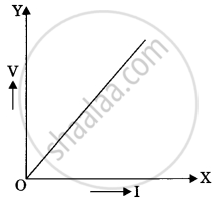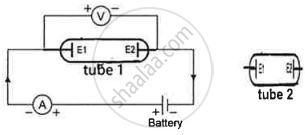Advertisements
Advertisements
प्रश्न
How does an increase in the temperature affect the specific resistance of a :
(i) Metal and
(ii) Semiconductor ?
उत्तर
(i) Metal : Specific resistance increases
(ii) Semiconductor : Specific resistance decreases
APPEARS IN
संबंधित प्रश्न
Find the resistance of a conductor if 0.24 A current is passing through it and a potential difference of 24 V is applied across it.
What is Resistivity?
The unit of electrical resistance is:
(a) ampere
(b) volt
(c) coulomb
(d) ohm
Calculate the current flowing through a wire of resistance 5 Ω connected to a battery of potential difference 3 V.
How would you connect two resistors in series? Draw a diagram. Calculate the total equivalent resistance.
A metal sphere is kept on an insulting stands. A negatively charged rod is brought near it, then the sphere is earthed as shown. On removing the earthing, and taking the negatively charged rod away, what will be the nature of charge on the sphere? Give reason for your answer.

State the limitations of Ohm’s law.
The slope of voltage (V) versus current (I) is called:

The circuit depicted in the figure is employed for studying Ohm's Law. Instead of using a standard resistor, a student opts for a glass tube filled with mercury (tube 1), connected to the circuit through two electrodes E1 & E2. He records the readings of the ammeter and voltmeter, thereby calculating the resistance. The student repeats the experiment by substituting tube 1 with tube 2, where the same amount of mercury fills the tube 2.

Neglecting internal resistance of the cell use (> or < or =) to compare
- the resistance in both the cases.
- the voltmeter readings in both the cases.
- the specific resistance in both the cases.
A current of 3.2 mA flows through a conductor. If charge on an electron is - 1.6 × 10-19 coulomb, find the number of electrons that will pass each second through the cross section of that conductor.
